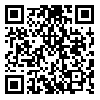BibTeX | RIS | EndNote | Medlars | ProCite | Reference Manager | RefWorks
Send citation to:
URL: http://refahj.uswr.ac.ir/article-1-2025-en.html
Objectives: The aim of the present study is to identify the risk factors and protective factors in temperament and character dimensions for male adolescents’ involvement in substance use, based on genetic (biological) and environmental (psychological) structure of personality proposed in Cloninger’s seven-factor model of temperament and character. Method: The present study covers a sample of 725 male adolescents ranging in age from 16 to 18 years old. The members of this group who served as the sample of this ex post facto study were all residents of Tebran & third grade high school students. Half of the sample group was selected through judgmental sampling while the method for the selection of the other half was systematic random sampling. The students fell into three groups according to results from the “substance use questionnaire”. The three groups were as follows: 1) the group of adolescents who had never experienced substance use. 2) Adolescents who had experienced substance use, but they had not used any sort of substances during the past year. 3) Adolescents who were substance user. The data were collected by “temperament & character inventory short form (TCI)” and “substance use questionnaire.” Findings: The collected data from the present study were analyzed using two models one-way analysis of variance & Scheffé’s comparison test. The results indicated that according to the Cloninger’s personality theory, the users group (group 3) had significantly higher scores in novelty seeking component of temperament (& its subcomponents, which are exploratory excitability, disorderliness, impulsiveness, and extravagance). The group who had never used substances (group 1) was significantly ahead of others in seif-directedness component of character (& its subcomponents, which are purposefulness, congruent second nature, responsibility, and resourcefulness). Furthermore, adolescents who had never used substances (group 1) & those who formerly were accustomed to use it (group 2), had significantly higher scores in cooperativeness component of character (& its subcomponents which are social acceptance, helpfulness, compassion, pure hearted, and empathy). Results: Based on the results, personality risk & protective factors for substance use and resiliency in male adolescents was identified. Generally, psychological characteristics, which secure adolescents in group 1 from substance use, are low level of novelty seeking, moderate level in harm avoidance, and high levels of cooperativeness & spiritual tendencies. On the other hand, high levels of novelty seeking, excitability and impulsiveness, along with low levels of self-directedness, responsibility, and resourcefulness are among the temperamental & character risk factors for initiating the use of substances. Factors, which keep the adolescents from continuing substance use despite having the experience, and lead them to resiliency, are high levels of reward dependency, attachment & shyness with strangers among temperament components along with high level of cooperativeness & its subcomponents (social acceptance, compassion, helpfulness & pure heartedness) among character components and also having spiritual tendencies. Concerning the ages at which people usually initiate involving in substance use, it seems that the most suitable time to identify those who are at risk of smoking and having alcohol is during the primary school. Moreover, the most appropriate time to identify those children who are at risk of using heavy drugs (such as opium & heroin) seems to be during the elementary school.
Received: 2015/09/1 | Accepted: 2015/09/1 | Published: 2015/09/1
| Rights and permissions | |
 |
This work is licensed under a Creative Commons Attribution-NonCommercial 4.0 International License. |





